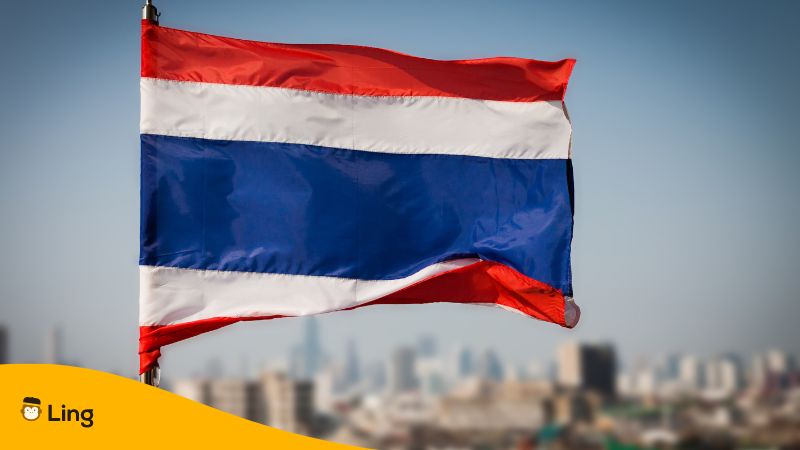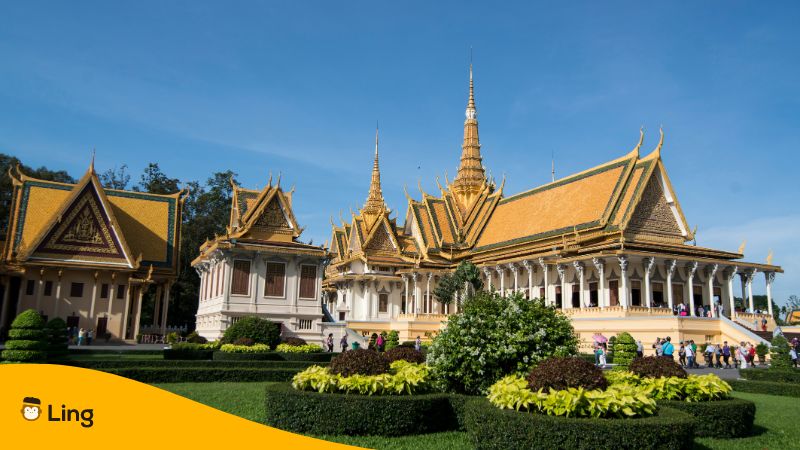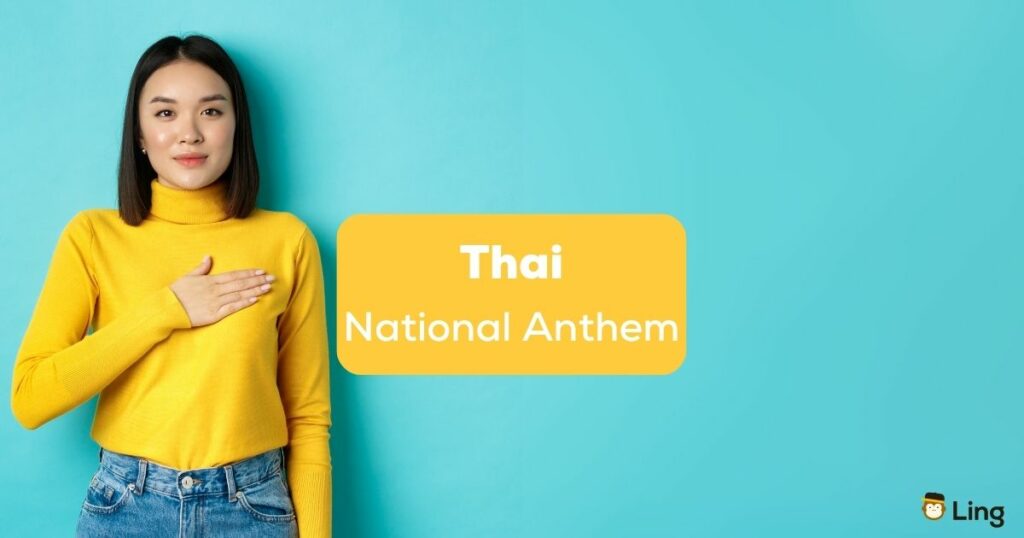Sawasdee ka, lovely readers! It’s time for some Thai! Here is a quick question for you regarding the Thai national anthem (Phelng chāti thịy – เพลงชาติไทย). Who composed the national anthem of Thailand? A) Peter Feit B) Phra Chenduriyang C) Piti Vādyakara D) Piti Wathayakon?
Answer: All of them! That’s because they are all one person. Yes, it sounds a bit wonky, but all these are the names of composer Phra Chenduriyang (พระเจนดุริยางค์), by which he was known during various phases of his life. Want to know another trivia about the Thai national anthem? It is one of the shortest national anthems in the world. Now, let’s get ready to sing along and show some love for the land of smiles!

History Of Thailand’s National Anthem
The history of the Thai national anthem goes back to the era of the absolute monarchy, when the country was known as the Royal Kingdom of Siam (Xāṇācạkr s̄yām – อาณาจักรสยาม). At that time, the royal anthem was used as a de facto national anthem. However, with the Siamese Revolution of 1932, which established a constitutional monarchy, there was a need for a new national anthem that would represent the values of the new government.
In 1934, a competition was held to find the lyrics of the new national anthem. The competition was open to anyone who wanted to participate, and the winning entry of original lyrics was chosen by a committee of judges. The winner was Khun Wichitmatra (ขุนวิจิตรมาตรา), a Thai writer.
The anthem’s melody, on the other hand, was composed by a German musician named Peter Feit. Feit’s father was a German American immigrant, and his mother was a Mon. King Rama VI Vajiravudh appointed him the director of the Royal Western string orchestra and granted him the feudal title and name of Phra Chenduriyang. He was commissioned by the Thai government to compose a new melody for the national anthem. Thus, the new national anthem came to be known as Phleng Chat Siam (เพลงชาติสยาม).
However, in 1939, the country’s name was changed from Siam to Thailand. Once again, the government announced a competition to find new lyrics for the national anthem, in which Luang Saranupraphan (หลวงสารานุประพันธ์), a prominent Thai poet who was known for his patriotic writings, was the winner. The melody by Peter Feit was retained. The new national anthem – Phleng Chat Thai – was first performed in 1939, during the celebration of King Ananda Mahidol’s 15th birthday.
The lyrics of the anthem praise the virtues of the Thai people and the royal family and urge them to work together for the betterment of the nation. The original version of the anthem was written in the Thai language, but there are also versions in English and other languages.
Today, the Thai national anthem is a symbol of national pride and unity. It’s played at important events and ceremonies and is sung by millions of Thai people every day. The anthem has also been the subject of controversy in recent years, with some people calling for changes to the lyrics or the melody. However, the vast majority of Thais continue to see it as an important part of their national identity.

Thai National Anthem: Phleng Chat Thai
Pra thet thai ruam luead nu’a chat chu’a thai
Pen pra cha rat pha thai kho’ng thai thuk suan
Yu dam rong khong wai dai thang muan
Duay thai luan mai rak sa mak khi
Thai ni rak sa ngop tae thu’ng rop mai khlat
Ek ka raj ja mai hai khrai khom khi
Sa la luead thuk yat pen chat p’hli
Tha loeng pra thet chat thai tha wi mi chai ch’yo
Thai National Anthem: English Translation
Thailand embraces in its bosom all people of Thai blood.
Every inch of Thailand belongs to the Thais.
It has long maintained its sovereignty,
Because the Thais have always been united.
The Thai people are peace-loving,
But they are no cowards at war.
They shall allow no one to rob them of their independence,
Nor shall they suffer tyranny.
All Thais are ready to give up every drop of blood
For the nation’s safety, freedom, and progress.
The Thai Royal Anthem: Sansoen Phra Barami
Kha Wora Phuttha Chao
Ao Mano Lae Sira Kran
Nop Phra Phummi Ban Bunya Direk
Ek Boromma Chakkrin
Phra Sayamin
Phra Yotsa Ying Yong
Yen Sira Phro Phra Bori Ban
Phon Phra Khun Tha Raksa
Puang Pracha Pen Sukkha San
Kho Bandan
Tha Prasong Dai
Chong Sarit Dang
Wang Wora Haruethai
Dut Cha Thawai Chai Chayo

The Thai Royal Anthem: English Translation
We, servants of His Great Majesty,
prostrate our hearts and heads,
to pay respect to the ruler, whose merits are boundless,
outstanding in the great Chakri dynasty,
the greatest of Siam,
with great and lasting honor,
(We are) secure and peaceful because of your royal rule,
results of King cure
(is) people in happiness and in peace,
May it be that
whatever you will,
be done
according to the hopes of your great heart
as we wish for victory, hurrah!
Quick Facts About Thai National Anthem
As with all things of national importance, the national anthem of Thailand also has many backstories, anecdotes, and trivia associated with it. Listed below are some interesting facts about the Thai national anthem.
- The Thai national anthem is played twice a day on national radio and television channels, and it’s mandatory for people to stand up and show respect while it’s being played.
- It is one of the few in the world that doesn’t mention the name of the country it represents. Instead, it praises the virtues of the Thai people and the country’s monarchy.
- The national anthem’s duration is less than a minute, making it one of the shortest national anthems in the world.
- The Thai Royal Anthem is played at all the movie theatres before the film starts. It is also played at the beginning of every major event – be it a cultural event like a music concert or a sporting event. Just like the national anthem, the royal anthem is also given respect by standing still while it plays.
- The music for the royal anthem was composed by Russian composer Pyotr Shchurovsky and its lyrics were written by Prince Narisara Nuvadtivongs, son of King Rama IV.
Have Quick Thai Lessons With Ling!
That was quite a trip down the history lane. Thailand is one of the top most visited countries in the world, especially in Southeast Asia, with a thriving culture to boast. It is always a good idea to have some basic Thai vocabulary and conversational phrases up your sleeves. Doing so ain’t that difficult! Take our word for it, for we at Ling have your back.
The Ling app makes for easy language learning and has a variety of features, including a gamified interface, interactive exercises, and fun quizzes. That’s why once you get hooked on to it, there won’t be any looking back. So, without further ado, go to your Google Play Store or Apple App Store and download the Ling App for free now!




































































